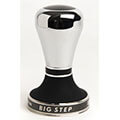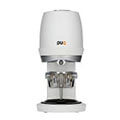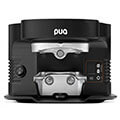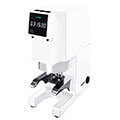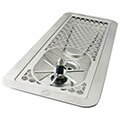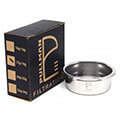After reading previous articles, you have hopefully already picked out the main equipment for your cafe. You have found your dream espresso machine, and chosen an espresso grinder to match. You’ve decided what kind of filter coffee you want to offer, and you’ve picked out the equipment to brew it.
All of the big-ticket items are nailed down — but there are still some important decisions to make. The accessories that you choose for your cafe can have a big impact on how efficiently your baristas can work, and the quality of the coffee they make.
In this article, we’ll highlight some of the most important accessories to consider in a specialty coffee setup.
Professional tampers
Tamping is at the heart of your espresso-making routine. The standard tamper supplied with many espresso machines will do the job but is not good enough for modern specialty coffee standards.
The purpose of tamping is to press the coffee flat and level so that there are no shortcuts for the water to pass through. Water always follows the path of least resistance. If there are any gaps in the bed of coffee then water will find them and dig channels through the bed, which quickly ruins the flavor of the espresso.
To do its job properly, the tamper needs to fit perfectly to the edge of the filter basket. If the tamper is too small, then it leaves a ring of un-tamped coffee around the edge of the basket. Since the coffee here is packed less tightly, it creates an easy route for the water to pass through, and the result is channeling. On the other hand, if the tamper is too big, then it can get stuck in the basket.
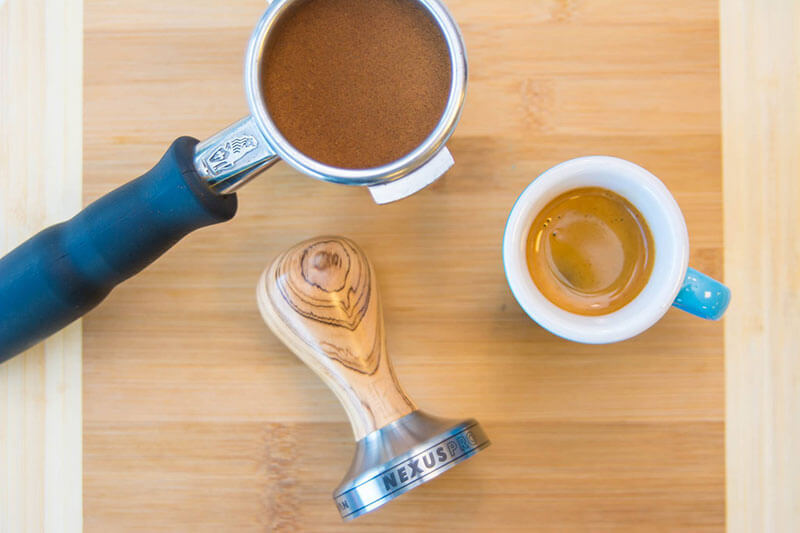
Making a tamper that fits perfectly into a filter basket without sticking takes a bit of precision engineering. Standard tampers are around 58mm in diameter, but filter baskets are slightly larger at 58.7mm across. The best tampers are designed to be as close as possible to 58.7mm in size, but not so close that they get stuck.
One of the best tampers on the market is the Pullman BigStep. This tamper is one of the largest on the market at 58.55mm across but has a unique stepped design that prevents the base of the tamper from getting stuck inside the basket. It’s also one of the most comfortable tampers to use for baristas. It has a soft rubber grip around the base, and the length of the handle can easily be adjusted to suit different-sized hands.
Automated tampers
Baristas need to tamp coffee exactly the same way, hundreds of times per day. An automated tamper can do the job faster and more consistently than a human — and reduce the strain on your baristas’ wrists while it’s at it.
Tamping is one of the biggest causes of injury among baristas. The repetitive motion of tamping can damage shoulders, wrists, and fingers. Baristas frequently twist their bodies or lift their shoulders during tamping, which puts strain on the lower back. Even with the best technique, making the same movement hundreds of times a day is very tiring.
Tamping incorrectly is also one of the easiest ways to ruin a shot of espresso. If the tamp is anything less than perfectly flat, then the flow of water through the coffee will be uneven. The uneven flow of water leads to uneven extraction and channeling — which can make coffee taste bitter and ashy. It’s also difficult for baristas to consistently tamp with the same force every time.
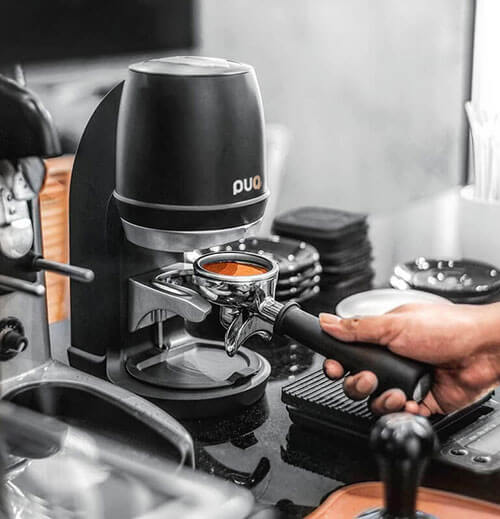
Best of all, using an automated tamper is also considerably faster than tamping by hand. For this reason alone, an automated tamper pays for itself in a busy cafe by allowing you to serve more customers.
There are several different models of automated tamper on the market. One of the most popular is the PuqPress, which offers great performance in a very small footprint. The non-stick tamping surface of the PuqPress reduces the amount of coffee build-up — but all automated tampers need regular cleaning throughout the day for best results.
Some models of PuqPress, such as the PuqPress M3, are designed to fit snugly underneath the espresso grinder, which is ideal for tight spaces.
Another brand, the WPM Kilo’, is less well-known internationally but offers some neat additional features. These features include a programmable tamping profile, and a circular ‘polishing’ motion, which reduces the amount of coffee that sticks to the tamping surface.
Pitcher rinsers
A pitcher rinser is an essential part of any specialty coffee setup. It ensures your baristas have clean pitchers and fresh milk for every single coffee.
When you steam milk, it’s important to always start with fresh, cold milk in a clean jug. This is not only more hygienic, but it’s also essential if you want your cappuccinos to have perfect glossy microfoam and beautiful latte art. Check our article about the best machine for latte art .
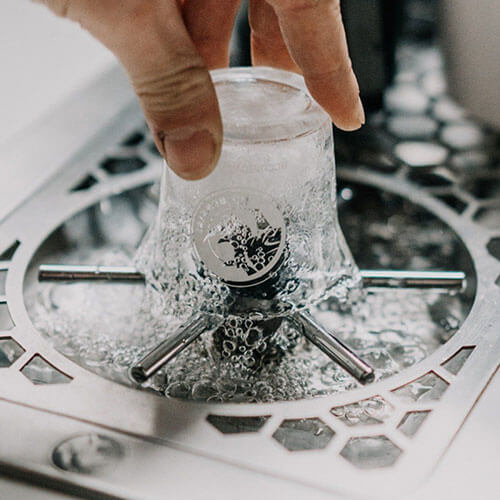
Leaving warm milk sitting around in a jug also creates the perfect place for bacteria to breed. Warm milk will quickly go sour and taste ‘off’, and the bacteria found in milk can cause serious illness.
Re-steaming milk doesn’t heat it enough to kill bacteria, so any leftover milk needs to be discarded immediately.
A pitcher rinser allows your baristas to rapidly empty and clean the milk jug in between pouring each drink. It is a lot faster than going to the sink to empty the jug and clean it by hand. Since using a pitcher rinser is so fast and easy, it removes any temptation for baristas to skip the cleaning step during busy times.
Several manufacturers offer pitcher rinsers, but one of the best is the Spinjet line from Rhinowares. The spinning nozzle on these rinsers ensures that every part of the jug is clean, while the drip tray is designed to be easy to clean.
Precision baskets
The filter basket is the part of the portafilter that holds the ground coffee. The quality of the filter basket can have a surprisingly large effect on the flavor of the coffee.
In most espresso machines, the filter basket is made cheaply by stamping the shape out of sheet metal. This can result in baskets with a very slightly uneven shape and size, or with varying sizes of holes in the bottom of the basket.
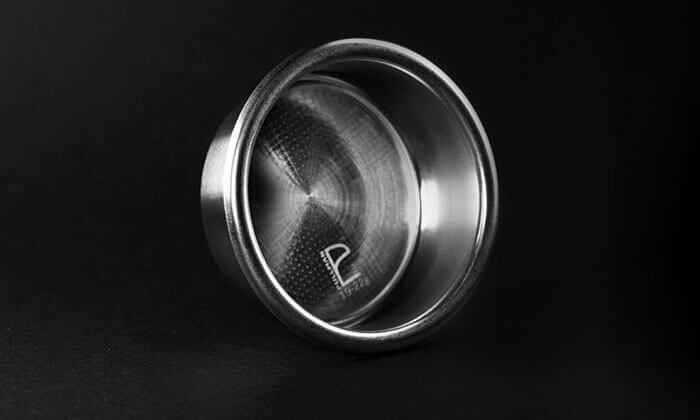
A precision basket is manufactured to be exactly the right size and shape, and the holes in the bottom are laser-cut to ensure each one is identical. This makes for higher, more even extraction, and sweeter, richer espresso.
The Pullman precision baskets are manufactured to extremely tight tolerances and have 876 holes in the base — nearly 20% more than the industry standard. Choose a size that fits the dose you plan to use, and taste the difference in the cup.
TEach of these accessories can make a big difference to the quality of drinks your baristas make. There are plenty of other tools that make up a complete specialty coffee setup, however. In the upcoming articles, we will give you a complete checklist of everything you’ll need so that your cafe can be fully equipped from day one.
Need help with the finer details of your coffee setup?
Contact our team for expert advice on which tools and accessories you will need, and where to source them.
REQUEST FREE CONSULTATION

